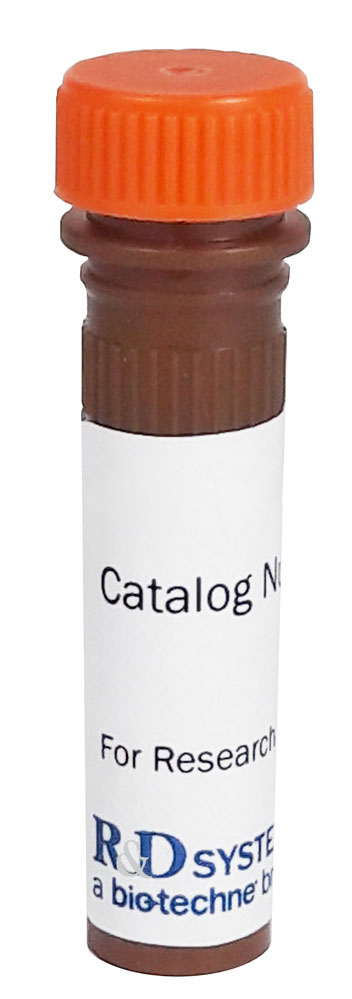Recombinant Mouse MD-1 Protein
Recombinant Mouse MD-1 Protein Summary
Product Specifications
| Mouse MD-1 (Asp20 - Ser162) Accession # O88188 |
IEGRGGGSGGGSGGGS | 10-His tag |
| N-terminus | C-terminus | |
Analysis
Customers also Viewed
Product Datasheets
130-MD/CF (carrier free)
Discontinued Product
130-MD
| Formulation | Lyophilized from a 0.2 μm filtered solution in PBS with BSA as a carrier protein. |
| Reconstitution | Reconstitute at 10 μg/mL in sterile PBS containing at least 0.1% human or bovine serum albumin. |
| Shipping | The product is shipped at ambient temperature. Upon receipt, store it immediately at the temperature recommended below. |
| Stability & Storage: | Use a manual defrost freezer and avoid repeated freeze-thaw cycles.
|
Background: MD-1
MD-1 is a secreted glycoprotein that was originally identified as a v-myb-regulated gene from avian myeloleukemia virus-transformed chicken myeloblasts (1). The mouse homologue of chicken MD-1 (also known as lymphocyte antigen 86) was subsequently discovered as a molecule that is associated with RP105, a type I transmembrane glycoprotein with extracellular leucine-rich repeats (LRR) typically found in Toll-like receptor (TLR) family members. However, RP105 has a short cytoplasmic tail and lacks the Toll-IL-1 R (TIR) domain that defines the IL-1 R/TLR superfamily (2 - 4). RP105 plays an important role in B-cell activation by bacterial lipopolysaccharide (LPS). It is expressed primarily on mature B cells, dendritic cells and macrophages (4).
Mouse MD-1 cDNA encodes a 162 amino acid (aa) residue precursor protein with a putative 19 aa signal peptide and two potential N-linked glycosylation sites. It shares 40% and 66% aa sequence identity with chicken and human MD-1 respectively (2, 3). MD-1 is mainly expressed in spleen, and also detectable in liver, brain, thymus, and kidney. MD-1 is required for efficient RP105 cell surface expression and function (2 - 5). Cell surface RP105/MD-1 complex, in conjunction with TLR4, mediates the innate immune response to LPS in B-cells. Activation of the RP105 complex has been shown to protect against apoptosis, induce B-cell proliferation and upregulate B7.2, a co-stimulatory molecule (5, 6). Since MD-1 is also expressed in liver and brain where RP105 is absent, it has been speculated that MD-1 can also be associated with other LRR-containing molecules, or have additional functions outside the immune system (6).
- Burk, O. and K. Klempnauer (1991) EMBO J. 10:3713.
- Miyake, K. et al. (1998) J. Immun. 161:1348.
- Miura, Y. et al. (1998) Blood 92:2815.
- Miyake, K. et al. (1995) J. Immunol. 154:3333.
- Nagai, Y. et al. (2002) Blood 99:1699.
- Ogata, H. et al. (2000) J. Exp. Med. 192:23.
FAQs
No product specific FAQs exist for this product, however you may
View all Proteins and Enzyme FAQsReviews for Recombinant Mouse MD-1 Protein
There are currently no reviews for this product. Be the first to review Recombinant Mouse MD-1 Protein and earn rewards!
Have you used Recombinant Mouse MD-1 Protein?
Submit a review and receive an Amazon gift card.
$25/€18/£15/$25CAN/¥75 Yuan/¥2500 Yen for a review with an image
$10/€7/£6/$10 CAD/¥70 Yuan/¥1110 Yen for a review without an image



